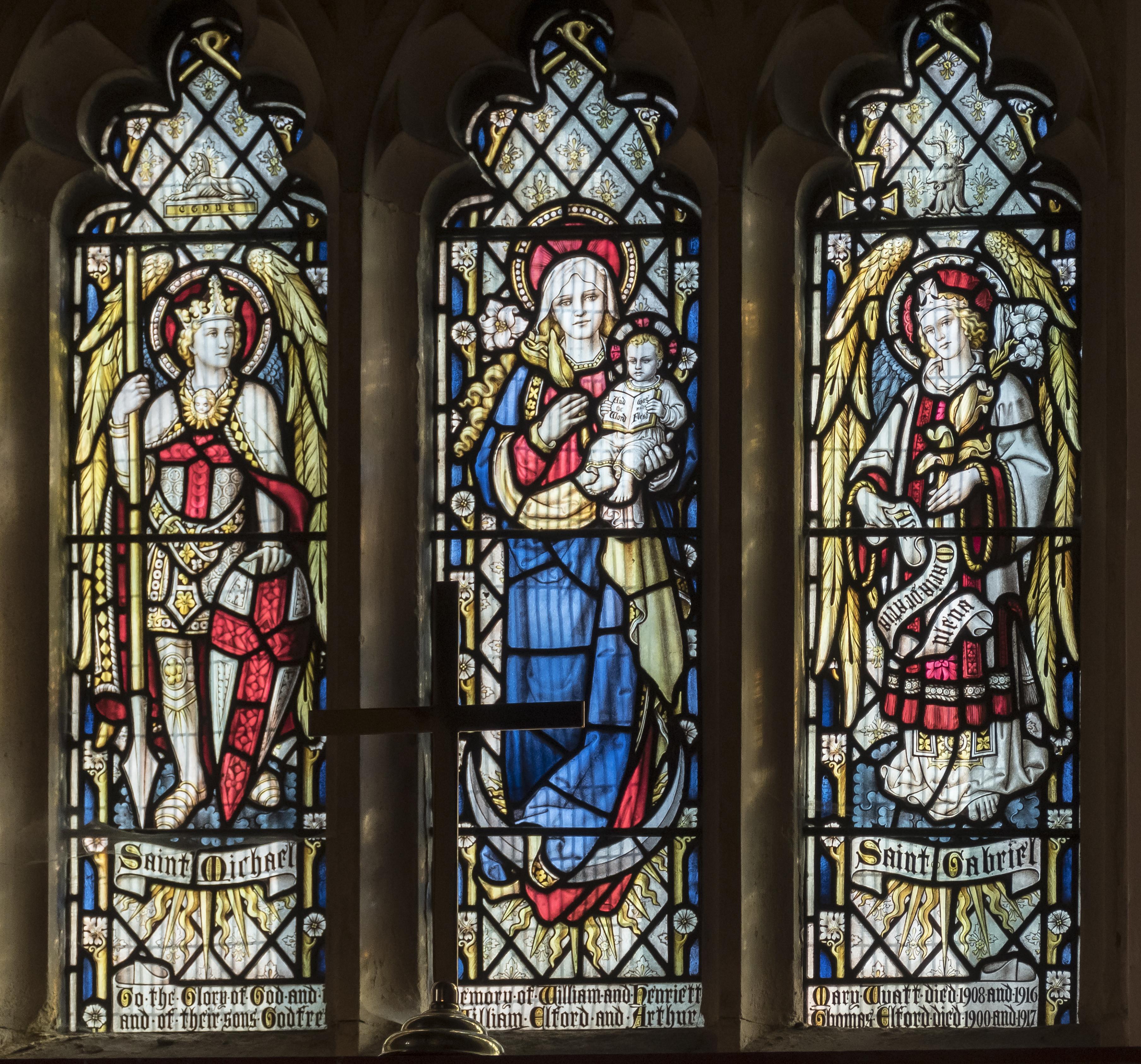St Mary’s church is one of four Anglo Saxon churches in Lincolnshire. The tower was built in the early 11th century as a ‘tower nave’; the chamber at the foot of the tower being the nave, where the congregation stood for services, conducted in an adjacent small chancel to the east. The foundations of the Anglo Saxon chancel were seen in 1884 when a heating system was installed.
The tower shows many of the features of Anglo Saxon building. The upper level of the tower shows evidence of an earlier belfry replaced in the 14th century. The battlemented pediment and pinnacles at the top of the tower are Victorian, the splendid gargoyles shown in a drawing by Nattes in 1795 being lost. Abutting the tower is a remarkable Anglo Saxon stair turret which appears to have been built against the already standing tower. The turret is cylindrical and consists of a rising helical tunnel made up of concrete-set rubble, its underside still bearing the impressions left by Anglo Saxon wooden shuttering. There are a few other examples of cylindrical stair turrets but only All Saints, Brixworth shares Broughton’s helical concrete construction.
In the 12th century the original small chancel was demolished and replaced by a Norman nave which was wider than the tower. In the 13th century the Norman chancel was modified and ‘Early English’ lancet style windows and a priest’s door were inserted. There are two 14th century aisles, linked to the nave by octagonal columns supporting double chamfered arches giving three bays on each side. The wide chancel arch is also of 14th century date. This work dates from the time of the Redford family who are commemorated by an alabaster depicting a knight and his lady and a large brass.
In 1671 the Anderson chapel was constructed to the north of the chancel, containing a fine alabaster figure (attributed to Jasper Latham) of Sir Edmund Anderson. St Mary's also contains many re-used Roman stones, two interlace decorated ‘Lindsey type’ stone grave covers, a medieval grave slab of Purbeck marble, a medieval stone sarcophagus, a possibly medieval graffito of a priest, a carved Jacobean oak pulpit, a cupboard utilising panels from a 15th century dole cupboard, as well as excellent carved wooden Victorian and early 20th century fittings.


